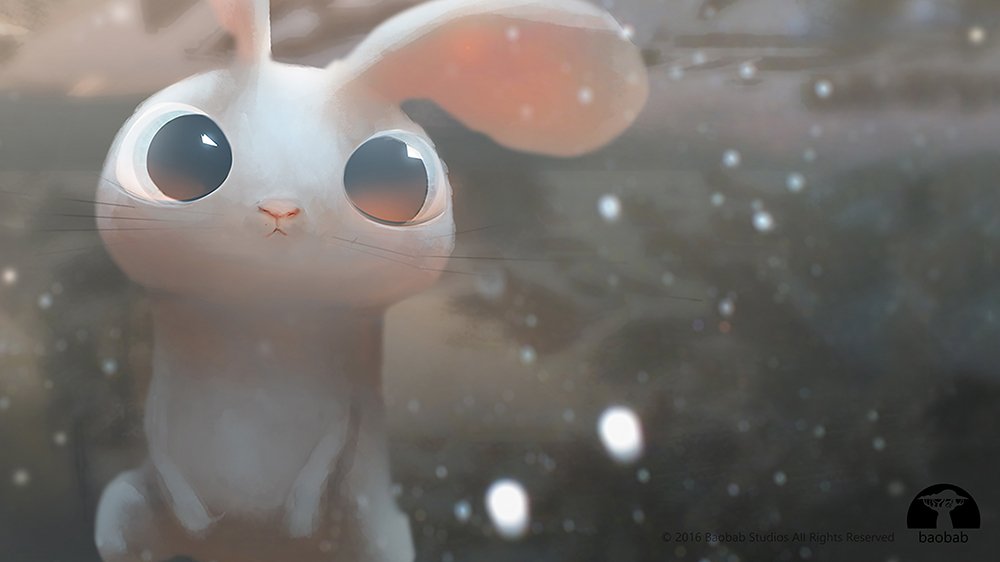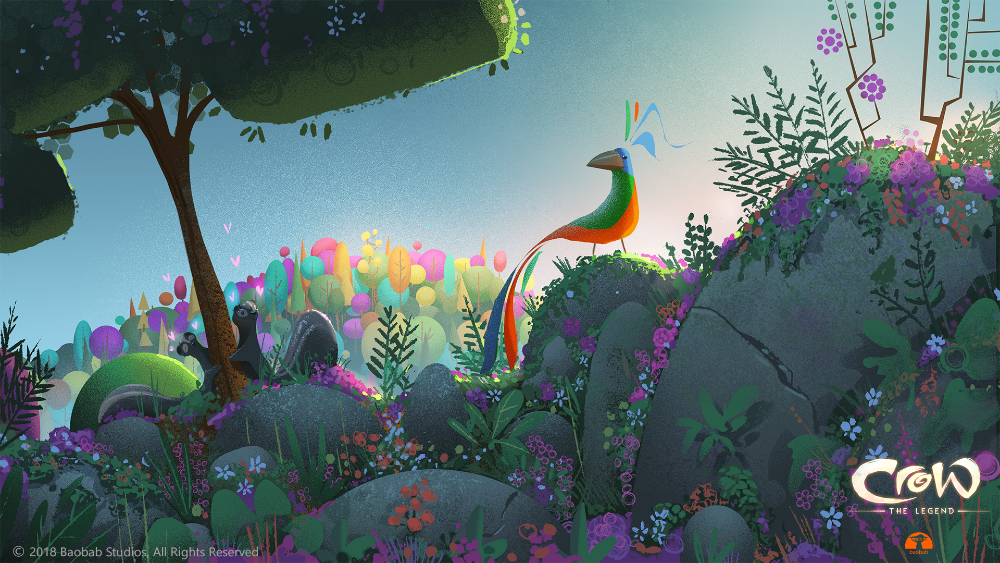
Research has shown that children as young as 18 months start acquiring emotional intelligence. As a father of twin boys, it’s been heartwarming for me to see how they attempt to soothe each other. When one of my sons is crying, for example, the other might look to hand him a toy. It’s an innate quality. Empathy is one of the key traits that makes humans, well… human. It’s what connects us, even if we’re strangers.
For all the rehashing of video game violence debates we’ve seen in the media these days, there’s one woefully underreported fact: games technology has immense power to do good. Virtual reality, in particular, immerses people in worlds and emotionally connects them with characters in ways that other entertainment media cannot. This facet makes VR a perfect medium for storytelling, and it gives those storytellers an opportunity to teach others about empathy. For Maureen Fan, CEO of VR animation studio Baobab, that is why VR will succeed.
When I sat down with Fan at the DICE Summit, she described an example in which a little girl was left all alone, crying on a park bench.
“In a film, you feel really bad for her, but you’re not getting out of your theater seat to go talk to the screen,” Fan said. “In a game, you get up and you talk to her, but the reason why you talk to her is [usually] to win a quest, be a hero, or get information. In real life, you would talk to her because you’re really worried about her and you want to help her. The holy grail for us is the empathy of films, agency of games, and the motivation of real life, where you care about this girl and you have a ‘bigger than life’ story…
The holy grail for us is the empathy of films, agency of games, and the motivation of real life
“So that is the holy grail, the creative vision of the company. When we’re making creative decisions about our experiences, it’s [driven by] that. Is this getting you to care so much that you’re not seeing the man behind the curtain, you’re not seeing the game maker, you’re just feeling all this feeling for this character, so much so, that you want to do something about it? Empathy is caring about that character and feeling what they feel, but then turning that empathy into action, doing something on behalf of that person, is empathy in action; that’s called compassion. So we’re trying to create experiences that elicit such a strong emotion that you exhibit compassion.”
Founded in 2015, Baobab is a young company, but its impressive pedigree has led some to label the studio the “Pixar of VR.” Fan was Vice President of Games at Zynga and also worked on Toy Story 3 while at Pixar. Chief Creative Officer Eric Darnell has extensive experience in animation, having directed all four Madagascar films for DreamWorks. Likewise, both Michael Hutchinson (Chief Scientist) and Larry Cutler (Chief Technical Officer) established some of the main character animation technology at DreamWorks, while Cutler also worked on Pixar’s Monster’s Inc. and Toy Story 2. The team has world’s of animation experience, but VR is so nascent that Fan fully understands Baobab can’t rest on the laurels of its leadership.
“I’m very honored, in a way, that people call us the Pixar of VR, but I want to be the Baobab of VR,” Fan noted. “But I also think VR is a means to an end [for us]. It’s not about VR… it’s not about AR. It’s about your connection with the character — so much so that you believe this character is real. You love this character. You’re amazed by the worlds you’re in. You believe that this world is real. It’s so immersive that it makes you dream and it inspires you to dream. That is ultimately the mission. We’re trying to create experiences that elevate you to that level and make you feel more hopeful and idealistic than when you’re in your normal life.”
One of the challenges of VR, Fan believes, is actually in its terminology. What Baobab is creating isn’t specifically a game in the traditional sense, nor is it purely a film.

“We have so many debates in the company about what we’re creating; is it a game or a film?” Fan said. “I used to use those terms to describe things, and then I’ve learned over time that it hasn’t been helpful when I have done that, because it comes with all that baggage of what people perceive a game to be. So Journey is a game, but some people would say it’s a narrative. Or [look at] a Telltale game, where it’s more narrative, but is it a game? You can almost define a game just as [offering] interactivity, and so our pieces are games in a way because there’s interactivity. So I said instead, we need to come up with new terms because it’s a new medium and we don’t know what to call it. So right now we’re saying narrative animated experience. But that could be anything. So we still need better terms.”
One key difference between what Baobab is creating and what traditional games can offer with multiple storylines in their multi-layered worlds is that Baobab’s animated experiences won’t contain branching narratives.
“Eric believes that telling one story well is hard enough [and] trying to create many different stories isn’t that satisfying,” Fan explained. “If you’ve read a lot of choose your adventure books, sometimes you hit a dead end, and it’s not very satisfying.”
Ultimately, getting too attached to video game mechanics can break the feeling of immersion that’s so critical to crafting believable VR worlds.
“It’s about getting you to feel certain emotions at specific times. If you pause and wait for a character to go into a walk cycle, that breaks the illusion, and then it reminds you there’s a game maker,” Fan continued. “What does the game maker want me to do now? And that pulls you out of the experience, and that hurts what Eric’s holy grail is, which is getting you to care so much about this character that you want to help them because you care about them.”
Thus far, Baobab has created two well-received animated experiences for VR in Asteroids! and Invasion! The company is currently making progress on its third and most ambitious project, Legend of Crow (working title), which the team envisions totaling around 30 minutes but spread out across episodes. Fan believes that shorter is better for now in the VR space since people can get headset fatigue. She, and the team and Baobab, also don’t view hyper-realism as the ultimate goal in VR. In fact, Legend of Crow deliberately utilizes a storybook feel. Fan is well aware that kids, not just adults, may be participants in the animated experiences Baobab creates.
“In VR, because you’re even more impressionable and it feels real, it could really shock you in a way more so than other media. So I think we have great responsibility,” she acknowledged.
That responsibility extends not only to teaching people about empathy, but highlighting the importance of diversity — a message that was front-and-center during the DICE Summit thanks to Xbox head Phil Spencer’s bold keynote.
“There’s actually an amazing study that was done by Jeremy Bailenson at Stanford’s VR lab. He has you look in the mirror and see that you’re a black woman. When you take it off, you actually have a different perception of the world,” Fan described.
“He’s done one recently where you’re interviewing a black woman versus a white man, and they actually show how you bias towards asking [certain] questions. But once you inhabit that body, you feel differently afterwards. They also did a recent piece about homelessness, where you are a homeless person and you actually go through the experience of losing your house… Afterwards, you’re likely to donate to a homeless charity. All these things vastly change [perception] versus just reading about it or watching it a different way.”
Baobab has taken the message of diversity to heart with Legend of Crow, especially.
“Legend of Crow is about diversity; it is about sacrificing for the greater good and using your celebrity platform to do so. This is why John Legend was really attracted to the experience,” Fan said. “He had been approached by many VR creators, but, for him, he is a huge social advocate. He’s always trying to use his celebrity to advance causes. His last album was actually Darkness and Light [and] Crow is literally about bringing lightness, the sunlight, back to Earth. But it’s also about how beauty is within. It’s about how each of the individual creatures of Earth are insecure about something. A skunk is insecure about her smell. But, you realize at the end, that the things that you think are flaws, are the things that make you unique, and once you can accept yourself, that’s when you can accept others. So there’s that message, and that’s why we cast, specifically, minorities and women for that message.”
But how are we going to grow? We can keep on catering to [males of a specific age], or we can try to expand
As Spencer alluded to, fostering diversity isn’t just morally sound, it makes good business sense. Fan knows that diversity will be key for VR to grow its audience, too.
“The stats right now show that the majority of people who are consuming VR content, who are purchasing the VR headsets, are males of a specific age,” she remarked. “But how are we going to grow? We can keep on catering to that, or we can try to expand it. To do that, we have to create experiences that are appealing [to everyone].
“To be honest, when we first did Invasion!, the distributors didn’t give us that much time of day, because they thought, ‘No, VR is for these hardcore, nerd gamer boys and they’re not going to want a comedic animated thing about aliens and bunnies.’ But once it launched and it beat out all the hardcore games, and the licensed IP from Hollywood, that’s when they’re like, ‘Oh, wait… Maybe there’s something there.’ … And if you’re going to show your kid or your parents VR at Christmas time when you unwrap the headset, what are you going to show them? How to kill zombies?”

Diversity is equally important when it comes to supplying the market with a wide array of VR content. Yes, it’s true that today’s VR headsets are clumsy devices that can be intimidating to the average consumer, but compelling content is what will draw audiences in, Fan stresses.
“I think what it’s going to take to get out of the trough [of disillusionment] is more content and I believe this is my heart,” she said. “The reason I purchased a Switch wasn’t because the form factor was cool. It was because I wanted to play Zelda. And I knew I was going to get a bajillion hours of gameplay for that. And, right now, for VR, if I put on a headset today, and I get five hours of amazing gameplay, when I come in next week, am I going to have a new five hours of gameplay of really high quality content? If the answer is no, I’m going to put it in my closet and it’s going to gather dust. So we need velocity of high quality content.”
As a gamer or industry analyst, it’s easy to dismiss VR for its minor installed base or its one-too-many mediocre experiences, but Fan is confident that the medium (and Baobab) will hit a tipping point. VR is precisely where it should be at this early stage, she believes.
“I don’t know why anyone’s surprised that we’re in a trough of disillusionment, because it’s natural to every single piece of technology,” she stated.
“All the really good VCs that we had talked to [in order] to raise [capital], their question wasn’t, ‘Is VR going to become a thing?’ They all believe that VR is going to become a huge thing… I think a lot of companies won’t necessarily make it through the trough because they’ll run out of money, but then there are companies such as Oculus, Sony, HTC Vive, that are funding content, and I think that will help continue to feed the beast as we experiment.”
For more on Baobab’s continuing pursuit of empathy and mixed reality, you should also read Amanda Farough’s hands-on impressions from Jack, a new experience that debuted at the Tribeca Film Festival. Check that out on Greenlit Content partner site, ShackNews.
 GameDaily.biz © 2025 | All Rights Reserved.
GameDaily.biz © 2025 | All Rights Reserved.